By Dr. Bruce Smith ——Bio and Archives--May 21, 2023
HeartlandLifestyles | CFP Comments | Reader Friendly | Subscribe | Email Us
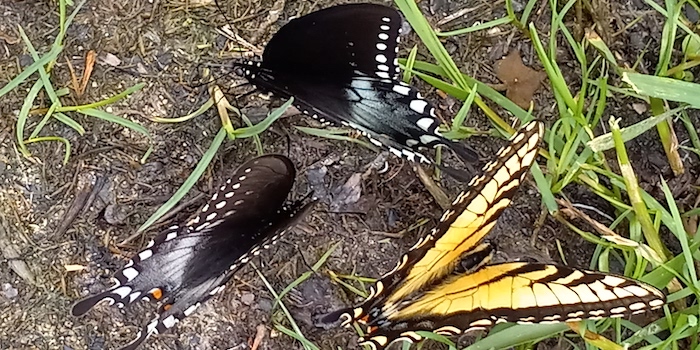
A wise history professor once told me “Things have not always been as they are today.” This is true in many ways. Certainly the technology is different. We live lives of comparative ease and travel much more than was possible not so long ago.
Our aesthetic notions have changed, too. Animal and plant breeding have brought us many improvements that have changed our lives for the better. Sometimes the world gets better year to year.
Still, it’s worthwhile to go back in time to consider what delighted and inspired our ancestors. This is easy to do even today, because the springtime sights that delighted our great-grandmothers can still be found. This time of the year in the Northern Hemisphere is the ideal time to see them yet. Here are just a few old-fashioned delights of spring.
I owe much of my appreciation of garden flowers to my paternal grandmother who delighted in plants and flowers the year round. She spent all of her adult life in Henry County, Indiana. All of the spring flowers in this column were favorites of hers, so they are still favorites of mine.
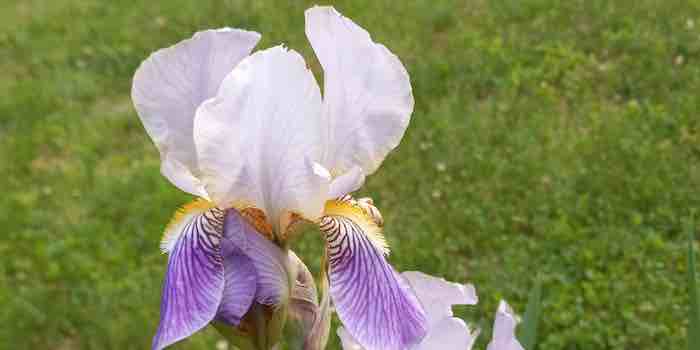
Irises These beauties go back to ancient Greece, where Iris was a messenger of the gods. Beautiful flowers sprouted everywhere she stepped, it is said. Irises can be crossed to produce spectacular new varieties. Over the past 50 years delicate and richly colored irises have become a garden feature almost everywhere. They’ve become larger and even more exotic in the process. But the plainer ones are still abundant on city lots and in country gardens. They often have a sweet scent that takes me right back to moments sniffing flowers as my grandmother named them in her sunny gardens.
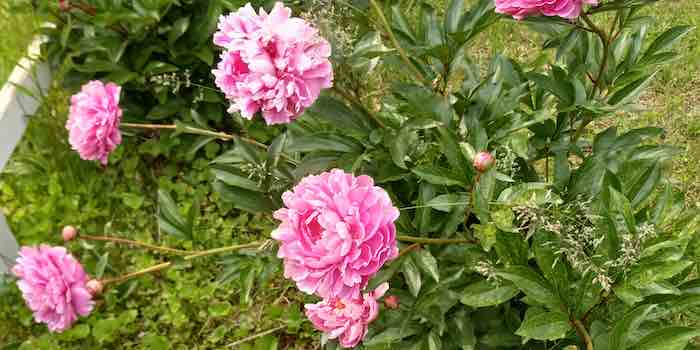
Peonies My grandmother called them ‘pineys’ in her soft Cumberland plateau accent. Peonies live long lives as their roots grow and spread underground. Established peony clumps may be three or more feet across with dozens of stems producing blooms, and they put up new stems each year. The older varieties were white or creamy white, pink, and darker pink. They also have a wonderful scent. Ants love them, but I don’t know why. They last quite a while as cut flowers.
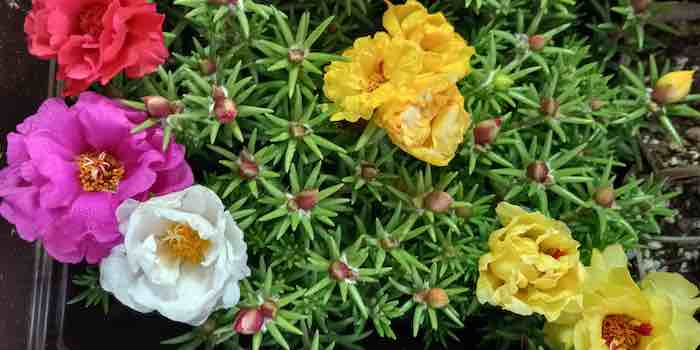
Moss Roses In greenhouses they’re called portulaca grandiflora and they’re succulents native to South America. They tolerate terrific heat and blazing sun. If well cared for, they produce abundant blooms that don’t last long but give us spectacular bright colors every day. I remember these growing in the big tractor tire flower bed in the lower part of the yard near the barnyard where there was plenty of blazing Indiana sun and humidity.
Support Canada Free Press


Spirea A particular favorite of mine is the old fashioned bridal veil spirea. There are many spirea varieties, but this one makes long, graceful new growth that will reach all the way to the ground, sometimes several feet away from the main stems. In Spring these branches will be covered in showy clumps of tiny creamy white blooms. They’re reminiscent of old fashioned lace that was often used for a bride’s veil. They also have a lovely scent in the warm sun.

Black locust Native to the southern Appalachians and Ozarks, black locust makes fine dense lumber that is a rich brown, resists rot, and is therefore prized for fence posts and firewood. In the springtime, it is among the last of the trees to bloom, but it is always worth the wait. The blooms carry a scent that is nothing short of heavenly. The flowers hang downward in elongated clusters. In the area beside the chicken house which my grandparents called the lane, black locusts grew tall and shaded part of the farmhouse yard in the afternoons. The clotheslines were near this lane and I remember my grandmother hanging clothes on the lines as the locusts bloomed. She would lower the support poles and wipe the galvanized wires before hanging the clothes with clothespins then raise the poles so the clothes would not touch the ground as they dried. Locust blossoms and air-dried sheets and towels made an unforgettable sensual memory for me.

Phlox My grandmother had patches of these on the south side of the house in areas that were sunny in spring, then more shaded in the summer as the apple and maple trees pushed out their leaves. Much work has been done with these flowers to produce many more colors now, but the ones I remember were nearly always mauve like the ones in the picture, or white. Sometimes I would see white ones with faint pink centers. Also scented, they produce showy stands of blooms before going to seed, but they’re perennials that come back every year.
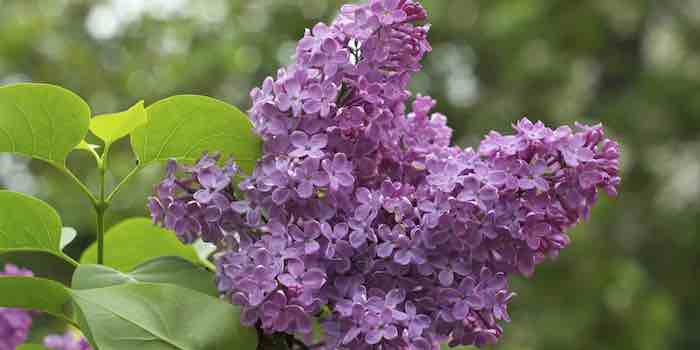
Lilac Of course, nothing beats the memorable scent of lilacs. Native to Europe and a few parts of Asia, they have been transplanted widely around the world. In my grandmother’s day the colors were traditional mauve, white, and a deep purple. The darker ones were always called French lilacs. There are more colors available now, including charming striped examples. Where I lived in the Upper Peninsula of Michigan, lilacs surrounded the house (and the old outhouse!) and ran along the lane for perhaps 75 feet. On a warm May day, it was possible to sit in the sun on the screen porch and let the breeze surround me with their intoxicating fragrance. They’re long lived and delightful to have nearby. They hold well in water for bouquets, spreading their perfume in the house.

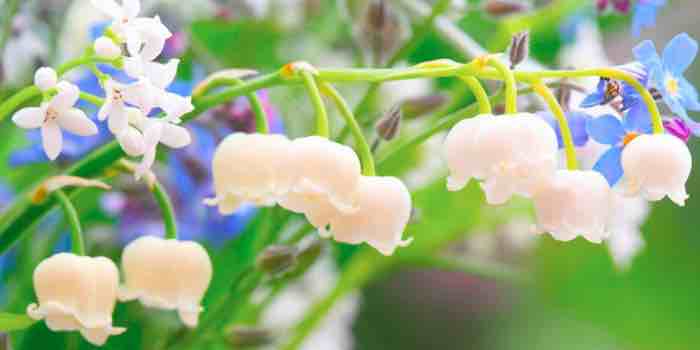
Lily of the Valley Among the top blooms for fragrance anywhere, lily of the valley is in a class all its own. My grandmother had beds of these in several places of several square feet each, always in deep shade for the summer. It was possible to pick fistfuls of the little stems loaded with the tiny bell-shaped blooms to put in a glass of water where they would last several days. Like lilacs and roses, there are perfumes based on the scent of lily of the valley. In the Vosges in eastern France there is a Fete du Muguet on May 1st which celebrates the abundant lily of the valley there and honors King Charles IX of France, who gave the blooms as gifts.
And to end this tribute to spring beauty, I remember Grandma Smith, born in May, 1902, who has no doubt considerably improved the gardens of her heavenly walks.
If you’re out hiking or looking for mushrooms, there are often nostalgic discoveries around the foundations or grounds of old homes and farms. Please share your own favorites in the comment section.
View Comments
Dr. Bruce Smith (Inkwell, Hearth and Plow) is a retired professor of history and a lifelong observer of politics and world events. He holds degrees from Indiana University and the University of Notre Dame. In addition to writing, he works as a caretaker and handyman. His non-fiction book The War Comes to Plum Street, about daily life in the 1930s and during World War II, may be ordered from Indiana University Press.